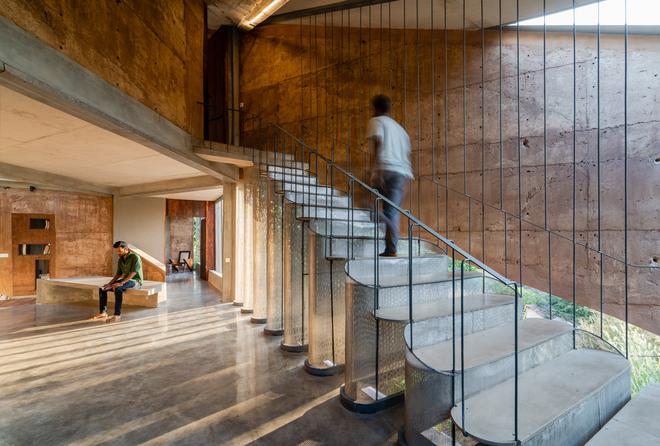
Architects and laypersons are increasingly incorporating waste and recycled materials as part of their designs, not piecemeal but in a more holistic manner. When Bill Sullivan first came to Auroville in 1974, there was hardly any plastic to be seen. Sullivan loved the place’s peace and quiet, not to mention the rolling plains of green, and soon became an Aurovillian. But over the next few decades, all of this changed.
It started with the tetra packs, a kind of plasticised cardboard carton used to package food, drinks and a number of other products. Plastic bags became ubiquitous, distributed for free with any purchase. And the absolute worst was styrofoam, i.e., expanded polystyrene particularly used to make food containers. “I saw India going into the pit. Because once the tetra packs and plastic bags and bottles came in, they were all over the street — and cows can’t eat it, crows can’t eat it, rats can’t eat it,” recalls Bill, who soon after coming to Auroville, took the ‘ill’ out of ‘Bill,’ becoming just ‘B.’
B decided to look into the problem of waste in Auroville. He found out that they generate approximately three tonnes of landfill per month. Of this, 70% is taken care of — it’s reused, upcycled and composted. But the remaining 30% goes into the ground, polluting the earth and contaminating the water table. So B suggested that they take that 30% and use it to build houses. “What is a landfill? It’s a mix of different materials — if you put the greasy pickle in with some plastic and an old shirt, they’re unusable, but separate them, and they become a resource,” says B.
He tried to convince a lot of architects and Aurovillians to use this waste to build, but no one would. The architects couldn’t do it because clients weren’t interested; and clients didn’t want to do it because most of them were trained consumerists, who believed that waste was toxic and must be thrown away. That’s when B decided to build his own house completely out of waste and recycled materials because he wanted to prove to people that it could be done. That was the genesis of what came to be dubbed ‘Trash Mahal.’
Tetra pack and glass bottles for Bill Sullivan, Auroville
For starters, the foundation of the house is a landfill: a hole filled with waste that was sealed shut and covered with cement mix. The walls are made from compressed earth blocks, which are a combination of subsoil, clay, sand and aggregate. The pillars holding up the house are made of wood from the African mahogany tree, which fell down during the 2014 cyclone. The roof comprises two frames of steel, welded together with strong rods to form a cage-like structure. This is covered by wire mesh on the outside, and thick tetra pack sheets on the inside. The entire roof is sprayed over with cement, to make it durable.
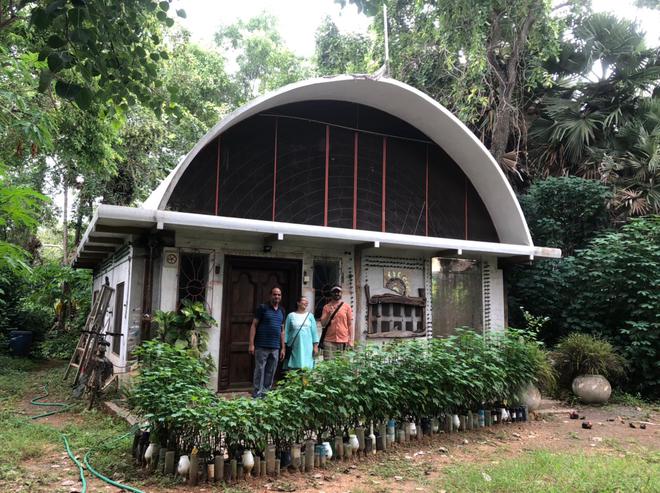
Each component of the house has a story, and B is only too happy to narrate it. For instance, the compressed earth blocks are rejects from a factory, which were considered too weak for use. Another interesting backstory revolves around the scores of glass bottles embedded in the walls of his house. “This area used to be a drinking zone, where lot of villagers came at night, drank and threw bottles around. I collected the bottles for two years, and put them all in my house,” says B. Other additions include the translucent door of a washing machine that serves as a window, and a set of makeshift steel blades on his roof that serve as his AC. “Even if there is no wind, the hot air rises, so these blades run all the time and keep the house cool. I’ve seen them in a lot of shops and factories in Puducherry, but never seen anyone use them in their house. Well, I did.”
The open-air bathroom behind his house is roofless, with three toilets, a shower and a sink — waste from all of which is composted. And as B says, the bathroom functions even better if it’s raining: he doesn’t have to turn on the shower at all, but can just go stand under the open sky.
Increasingly, a large number of architects are using waste and recyclable materials in their designs. This can range from using waste as just one aspect of the design, to designing the entire house from mostly recycled materials.
Mud and waste for Vinu Daniel, Kerala
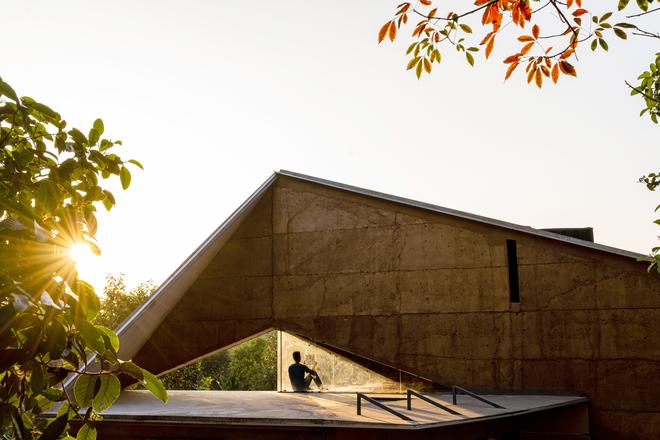
Architect Vinu Daniel falls in the latter category, whose company Wallmakers is devoted to using mud and waste as the chief components to build, like what he did for his Shikhara project in Thiruvananthapuram. This was particularly in response to the global climate crisis. Questions like ‘Should we build?’ became more important than ‘What should we build? That’s when Daniel started using waste and materials easily available on site. In fact, it’s what led to his pioneering discovery of the ‘Debris Wall’, for which he now holds a patent.
“We were building in an island area of Kerala and this was in the monsoon,” recalls Daniel. They were working exclusively with mud at the time, mostly practising dry earth architecture, but in this particular case, they realised that they might have to shift course. “For starters, it was very hard to find dry earth during the monsoons, everything was damp. And even when we did manage to find it, procuring it became a big problem due to legal reasons — you can quarry a whole mountain, no one will say anything, but the moment you take some waste mud and put it on a truck, it’s considered stealing. You need permission from the Geological Department for any transportation of mud, no matter how small. It was just getting very tedious,” says Daniel.
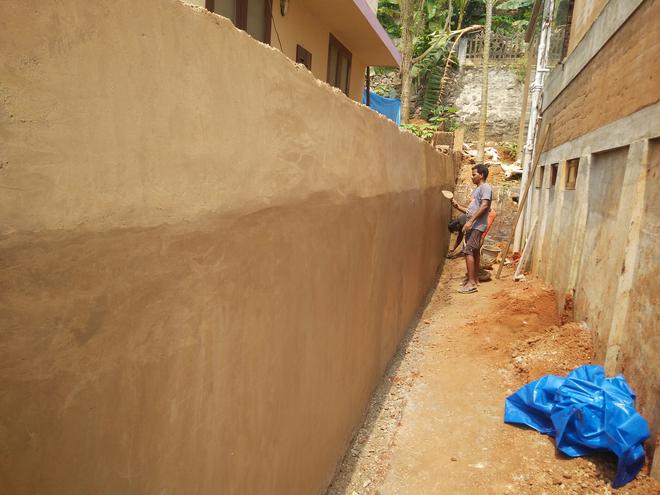
Instead, Daniel saw that there was an abundance of old dilapidated buildings and construction debris lying around. Using their experience in mud architecture, they pulverised this debris and used it to construct walls. To their amazement, they saw that this debris was not just good for walls and partitions, but it was also load bearing. Daniel soon patented the ‘Debris Wall,’ which is a quintessential feature of his designs today. The Debris House at St. Peter’s Junction, Pathanamthitta, Kerala, is a fine example.
Wood and lime for Aravind Manoharan, Coimbatore
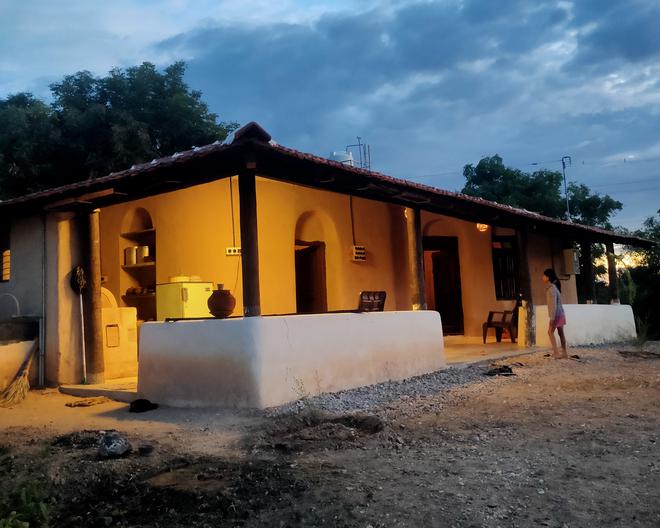
Then there is Coimbatore-based architect Aravind Manoharan, who uses a combination of old stones, wood and lime in his designs. In Coimbatore and the surrounding areas, a lot of older houses are made from natural materials, and Manoharan adapted some of these techniques in his own work. “We use mud and stones from demolished houses. There is a market for old wood in our area, so we buy a lot of recycled wood from there and use it to make doors and windows. And then instead of cement, we use river sand and lime, mixing it with two additives: jaggery water and kadukkai (yellow myrobalan seeds),” says Manoharan. Of these, the stones and wood are usually recycled.
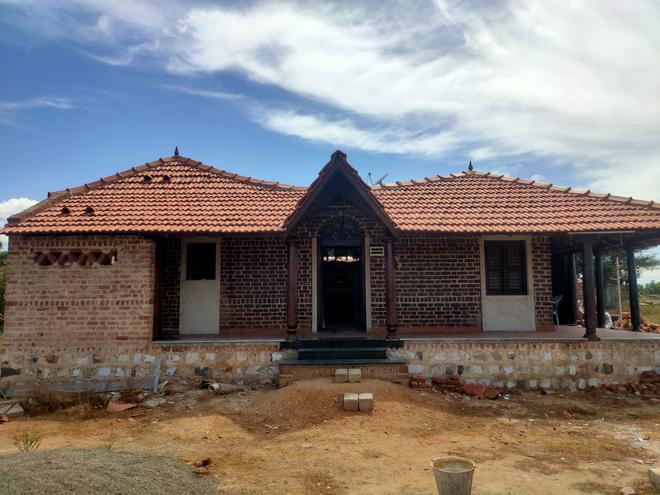
Manoharan divulges that while cement is usually strong right after construction and only gets weaker with time, lime and sand are the opposite: they are weaker right after construction, but only get stronger with time. Even old wood is more durable than new wood: because it’s been weathered, and has already withstood termites and other tests of time. For his part, Manoharan never tries to convince anyone to use natural or recycled materials in their homes. He sees it as a collaboration: he presents people with possibilities, and is willing to hear any ideas or suggestions they have. And more recently, he has been getting an increasing number of people coming to him with enquiries about using recycled materials.
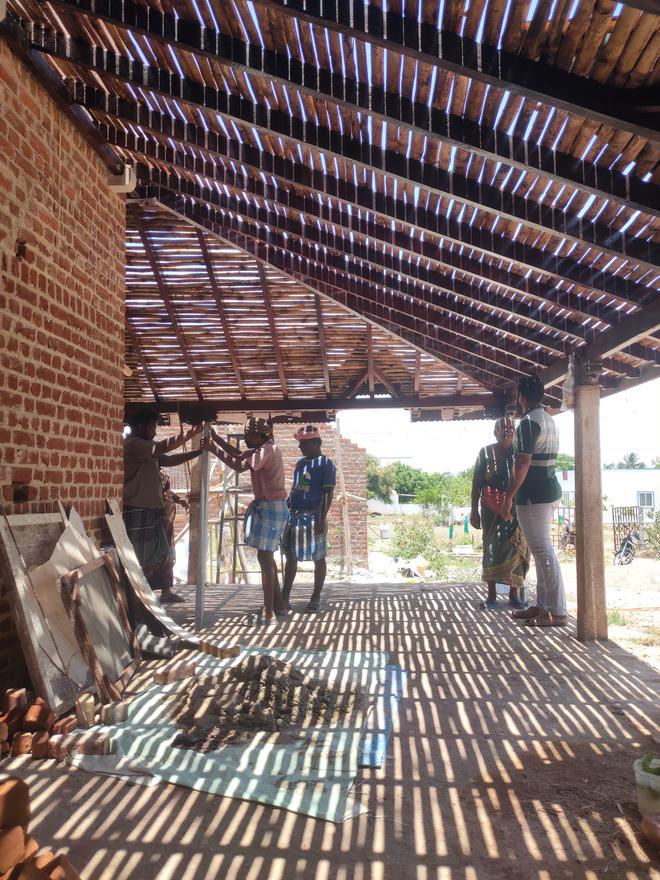
Others haven’t found the process so easy. Daniel believes using natural, recyclable or waste materials in construction in India is riddled with unnecessary obstacles. For starters, one needs the permission of the National Council for Cement and Building Materials (NCB) if you’re building with anything other than bricks and cement. This approval is a long process, and even if you get it, there are other hurdles: sceptical engineers, even more sceptical clients, who think anything sans concrete will simply fall down.
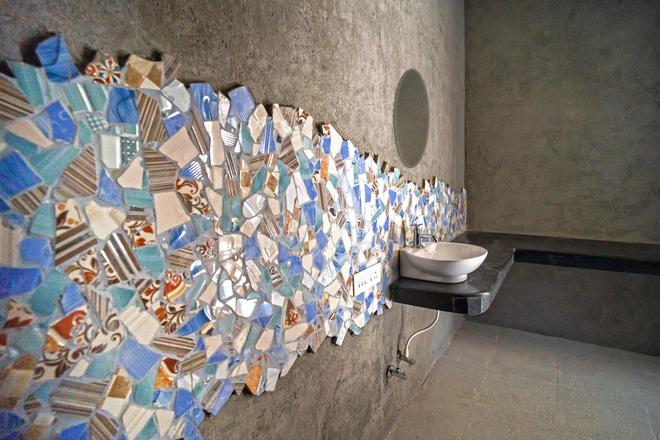
He also laments the recent trend of using waste in an eclectic or unintegrated way. “Unfortunately, 90% of the people who use waste as part of their construction projects use it in a very eclectic way — there’ll be one sculpture or one window made from recyclable materials. Many times, the waste doesn’t even match the rest of the project, but it’s just put in as a kind of front. So you have to be very careful to integrate waste materials into your construction, so that it doesn’t stand out,” says Daniel.
Back in Auroville, B, too, hasn’t been able to convince others to build, and live in, houses similar to his own. When he first presented the Auroville Town Development Council with his idea of building a house entirely from trash, the idea was mocked, and quickly shot down. They told him they didn’t want him living in a house that was toxic. “But I told them you’re wrong. Your apartments are 100 times more toxic than my house will be. Building from waste is not toxic, it’s combating toxicity.”







